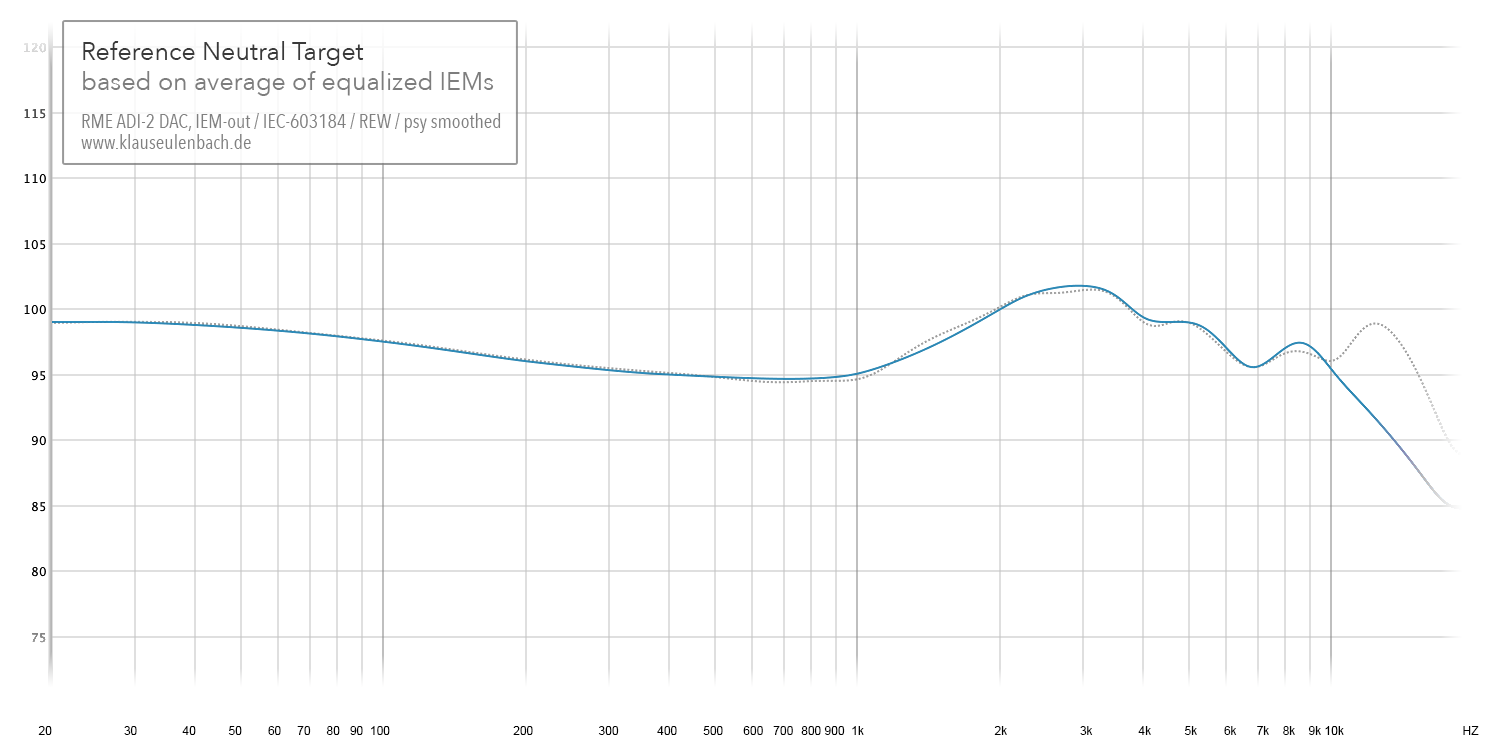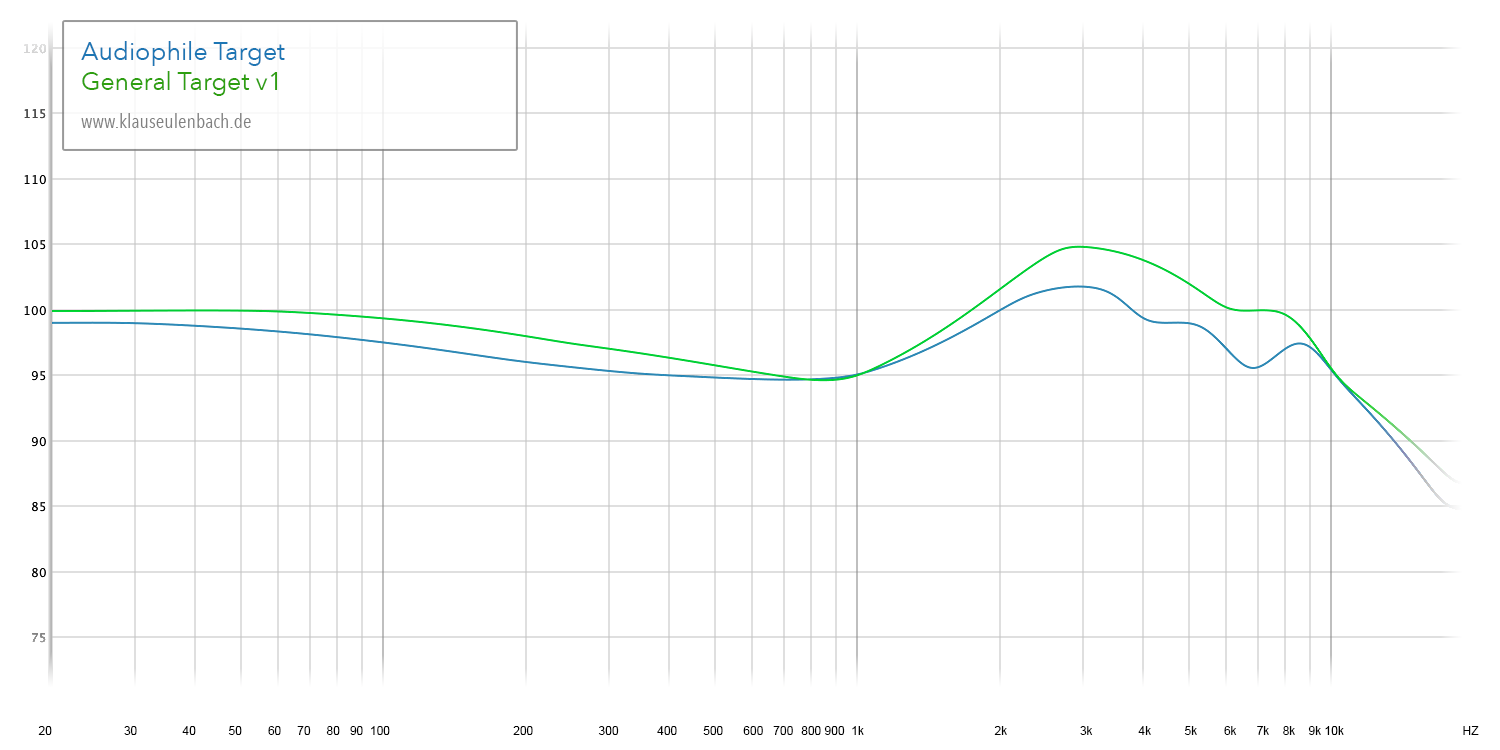
Discussing RAW frequency responses is hot right now. More and more audiophiles are starting to create their own measurement setups. So did I. But what worth are raw curves if you don’t know how to interpret them? Following my very general introduction, I want to try to create a more audiophile linear reference target on my own.
Basics
crinacle.com
I was working on a more expansive post myself when the article above dropped. I think his structure is far better than what I was working on. So I ended right there and thank him for his dedication which saves me a lot of time. In the future, I do want to touch on more aspects.
Crinacle’s IEM Measurement Database
On a side note, I do think that some of my curves have more accuracy, especially in the treble. Crinacle says that he always matches the “coupler resonance” (read: ear canal resonance) to 8 kHz. Personally, I think this is wrong unless you compare similar designs. This should be fine for most audiophile IEMs which often share a basic design and simply juggle with drivers, crossovers and tubes to be unique. But at its core one should consider the fit more heavily. That’s why I always start listening to IEMs first and analyze the frequency response with a sine tone generator. After that I match the peaks on the coupler. Alas, I think I have the most accurate measurements of CIEMs yet. But of course one should consider that I usually go for a deep fit and/or have a shorter ear canal which shifts my resonance higher.
A New Approach
Let’s ignore all scientific research for a second. The premise is that for true fidelity all frequencies should have the same loudness so that the timbre is correct. Long before I measured IEMs I solely trusted on a sine tone generator to analyze the frequency response of a headphone or IEM. So two years ago I have taken an IEM that I think sounds very neutral (InEar ProPhile 8) and used an equalizer to sort the edges out to make it subjectively as flat as possible. Two years later, I now want to redo the same.
Many factors come into play here: loudness, HRTF and of course the inability of absolute hearing. So the error rate is relatively high – but maybe lower than comparing measurements from different sources. I do have to say that I take great care of my hearing – far above average. So you might see me wearing hearing protection without going to the club or a concert. Most of the times I wear IEM’s, less surprisingly, though I use very low volume even when commuting.
I have noticed that the outcome depends immensely on ear fatigue. If I perform this test on a Sunday morning (without attending a party the night before), my ears are much more susceptible. I pick up bass as much stronger and show little tolerance in the treble. Even when I re-do the test on the same day without having left the house (I take Covid-19 seriously), my curve ends up as a stronger v-shape. Then again, after a long day, when I drop dead tired into bed, a tiny bass accentuation or tendency towards sibilance can increase fatigue considerably.
So even for a single person, I don’t believe there is one perfect target response. But to prove myself as an audiophile elitist, here is my best attempt.
- I equalized my IEMs from 80 Hz to 10 kHz only, because I don’t want the IEMs to function as hearing aids and compensate for the natural hearing drop.
- I am using the parametric EQ of the RME ADI-2 DAC FS so I am limited to 5 corrections per measurement. For handily setting the options, this is quite a lot and can get very complex. Let me tell you, it ate up many hours.
- With the EQ active, I then performed measurements with my usual setup: RME ADI-2 DAC as source and a 60318-4 compliant ear coupler.
The Result
I have equalized the 64 Audio tia Fourté, Campfire Solaris and my custom 64 Audio A18t.

The Solaris was a real pain to equalize. It still sounds very fuzzy and sizzly in the treble which is probably due to the pressure above 10 kHz. But even with sine sweeps I can still not confirm smooth transitions. I notice many peaks that I couldn’t iron out and are apparent in the measurement. The (post-EQ) A18t sounds most natural in the high frequencies. I did prefer the bass response of EQ’ed Fourté and Solaris.
So here it is, my IEM reference target for low to medium volumes.

I will gladly continue to update the target as I continue to equalize more IEMs. However, this is very time consuming and I don’t think that anybody except for me has a useful purpose for it. Anyway, let’s have a short comparison with my very general target from before.

The general approach was definitely more contrasty and dynamic. It sounds just as balanced but can create some fatigue – at least for me. I am pretty certain that at higher volumes the audiophile target would flatten itself out a bit more.

It’s amazing the work you have done with this, I have taken the trouble to use your new curve as a compensation with Jaakko Pasanen’s AutoEQ (https://github. com/jaakkopasanen/AutoEq) with my IEMs (not very neutral in my opinion, but I can’t afford Neutral IEMs for now, as my goal could be, the Moondrop Aria) the KZ ZSN Pro X, I have done a lot of tests with both OverEar and InEar Targets and the truth is that I have even felt confused with the differences between one and the other, although I must say that there are OverEar targets that I do not think sound bad as the “Optimum Hifi of Oratory1990 or USound” in short, as a result of your curve made with WebPlotDigitizer that gave me this result after making it standard in AutoEQ to be able to use it as Compensation, (https: //drive. google.com/file/d/1TB9TGAdPf3Fv3wwZux6RsX0kzehoxB9M/view?usp=sharing) I think there may be a little measurement error as I am not an expert in this but I think I got a good result and the experience is quite pleasant to say the truth. I think that if you spend enough time with it you can make a pretty good target as a reference since the Harman curves and more are disgusting to me even though I am not a fan of the sound SO hot as it seems.
Translated with http://www.DeepL.com/Translator (free version)